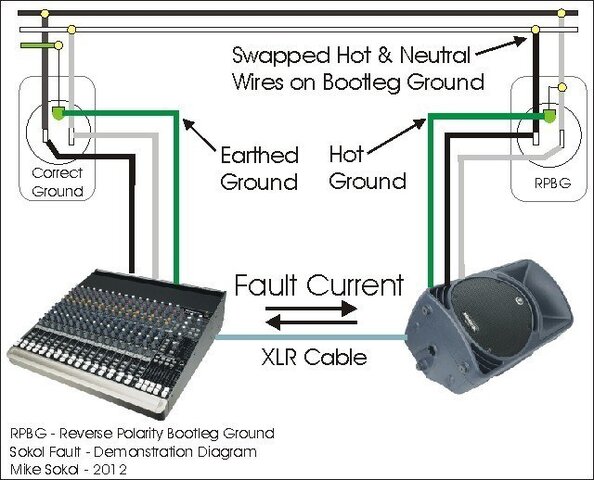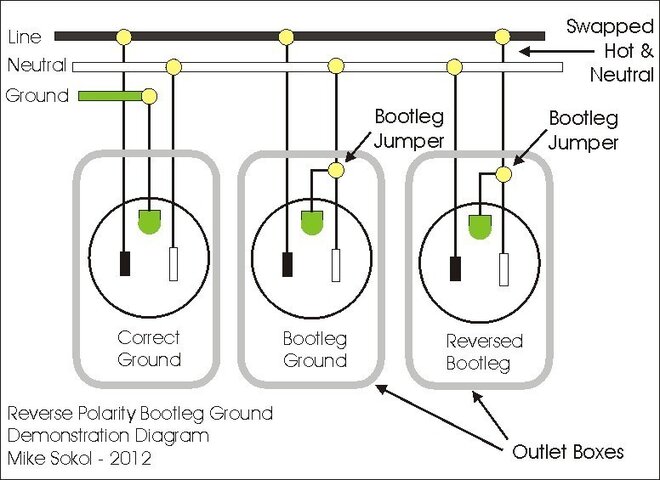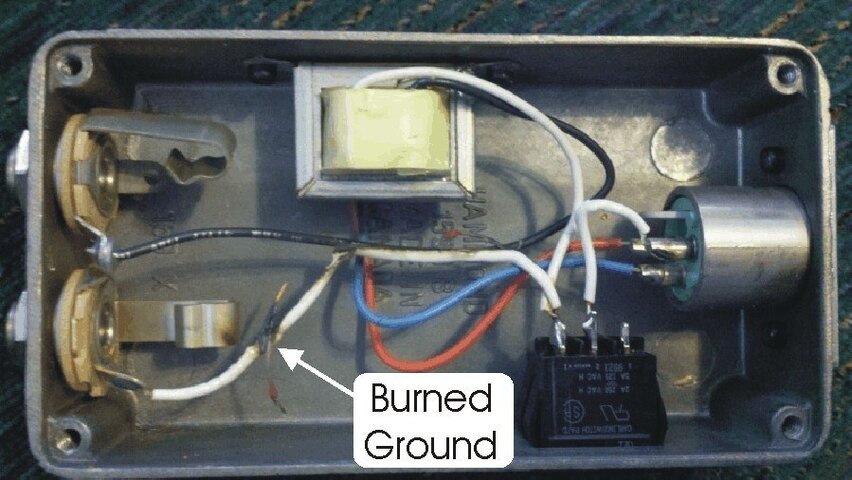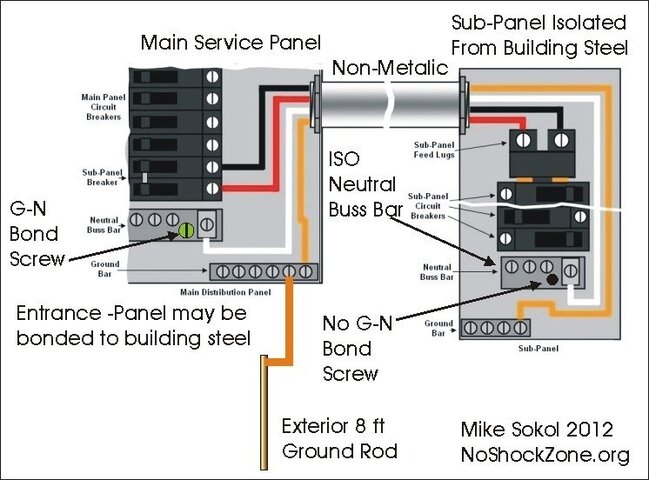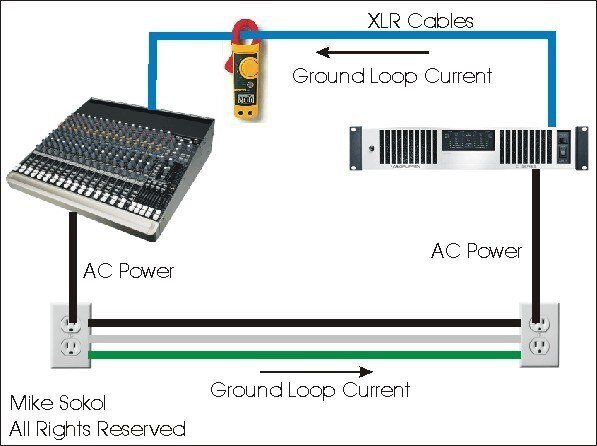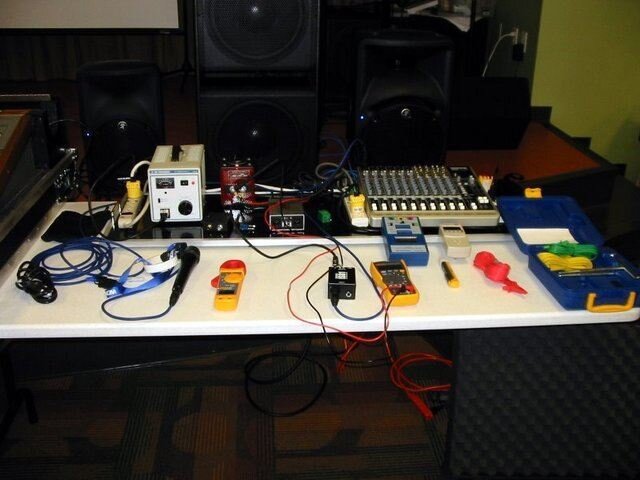Or by metering between
ground and the two blades. If one cones up 0 you have a problem.
That test wouldn't work because G-N should be 0v in a correct
system as well as in a RPBG scenario.
The caveat to that is that G-Earth and N-Earth should also be 0v, but in a RPBG scenario, they would actually both be energized to 120v relative to earth
ground, but because of the nature of the fault would appear to be at 0v relative to earth.
The key here is to differentiate 0v from meaning that something is harmless and unenergized. There are linemen who latch onto the high-voltage conductors they are servicing to work on the transmission lines while live. Though they themselves are 0v relative to the very high
voltage lines they are servicing, they are still energized to many thousands of volts relative to earth. The "trick", if you want to
call it that, is not to come in contact with
ground or conductors at any other potential.
At the risk of grossly oversimplifying this, if you're at 50kV and only come in contact with that 50kV source, you're fine because you're at 0v relative to the source and no
current flows through you. If you're at 50kV and come in contact with earth, a lot of
current will surge through you.
The problem with an RPBG scenario is that the only way to tell it exists is measure G-Earth, N-Earth, or use a non-contact
voltage detector that will sense the
ground and
neutral conductors are energized -- even if they measure 0v between each other and 120v relative to the hot
conductor.
The
point of all of this is to understand that the
ground pin is not always connected to
ground, and that the hot and
neutral conductors are not always correctly wired. These conditions can exist for a breathtakingly long time before the stars align just long enough to get someone hurt or start a fire.
Lighting is a good example of where this could be bad. Say you're in an old room that didn't originally have
ground wires. Someone decided to add grounds by connecting the
ground pins of receptacles to the
neutral wires, but mistakingly wired the
neutral pin to the hot
conductor and hot pin to the
neutral conductor.
For 10 years you have a theatrical light with giant metal
fixture bodies connected to an RPBG
circuit. The pipe it hangs on is mounted to concrete so it isn't grounded either. The light always turned on so you didn't think much of it. After all, if someone did check, they'd find 0v N-G and 120v H-N and H-G, which is what you'd expect to find. What you wouldn't notice is that G-Earth happened to be 120v as well...
On this particular day, you happen to using one
hand to focus the light while using your other
hand to brace yourself on a metal railing --- you're barbecued. The
fixture's body is energized to 120v relative to earth though it would've appeared to be 0v to
ground. When you touch one
hand to an unpainted part of the
fixture and another to an unpainted part of the railing, the freak conditions exist to create catastrophe. I say freak, because usually
fixture bodies are painted.
That said, I've seen a lot of lighting fixtures where the wires are loose in the connectors and the
ground wire comes dangerously close to contacting the hot
wire. If the right conditions exist, all you need is for someone to come in contact with an unpainted metal part of the
fixture body while somehow also being grounded themselves to cause an electrical
current to flow from the
fixture body, through a person, and into something grounded.
This is all to say that proper grounding is important for a safe working (and living) environment and your
meter can tell you the truth but be deceptive to you all at the same time. Whether or not something is properly grounded may or may not be apparent, but nonetheless the consequences of improper grounding can be grave. Such faults can exist in devices as well as in building wiring. Just because something seems to have been working for a long period of time does not necessarily mean that it does not have faults which, if the stars aligned, could produce fatal results.





